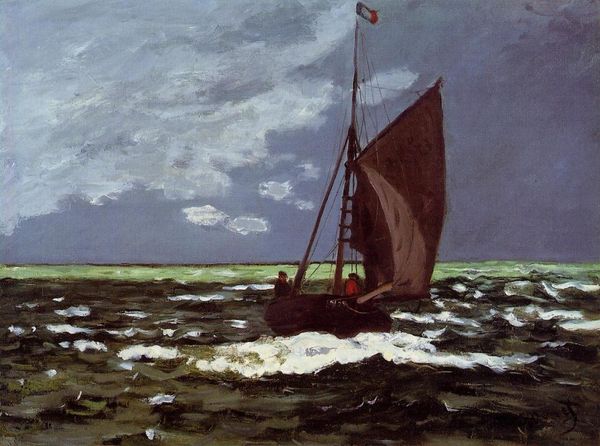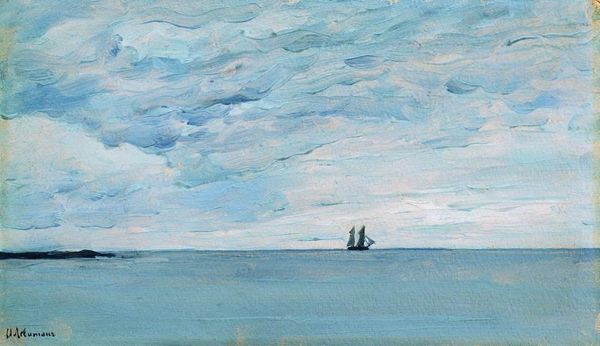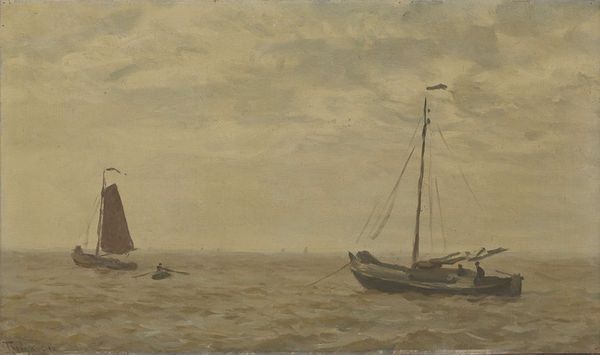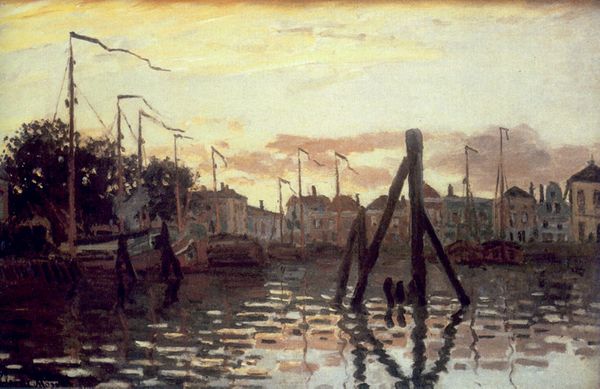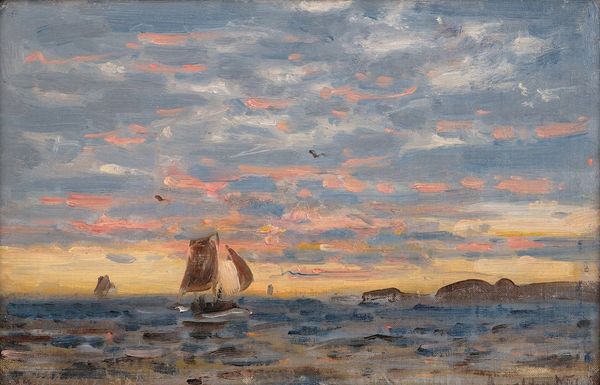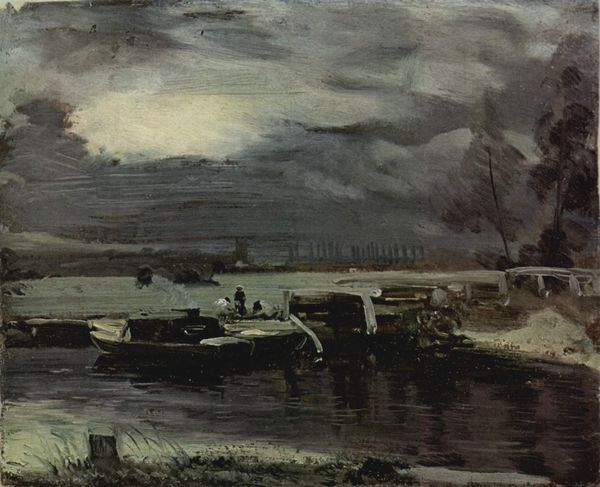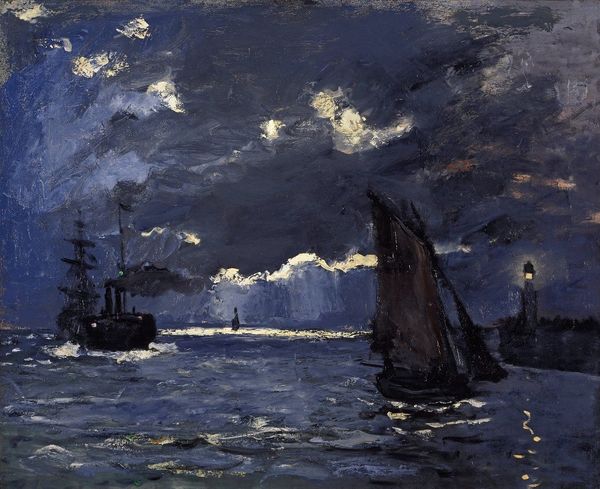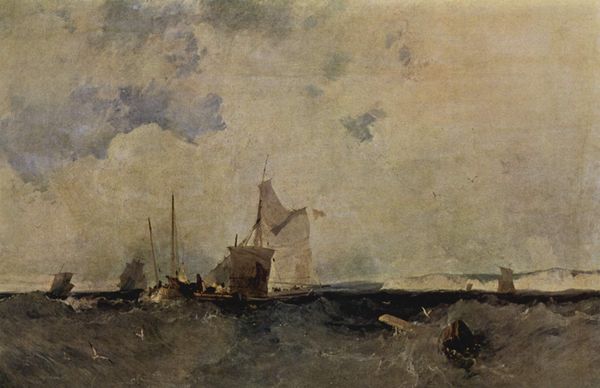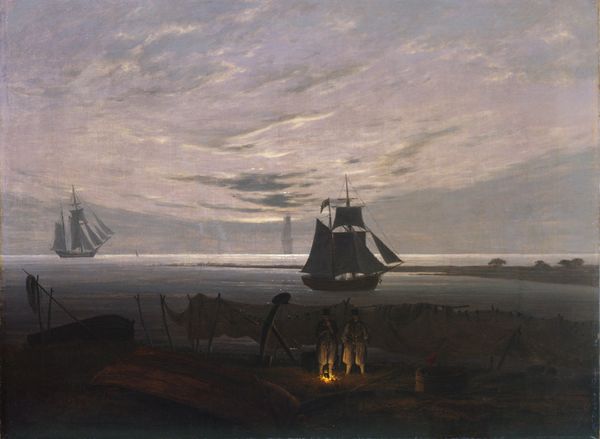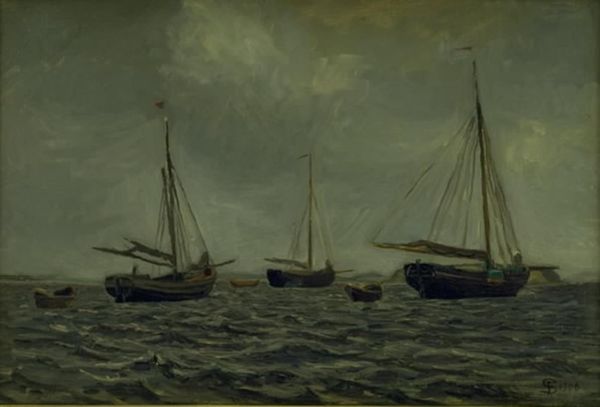
Copyright: Public domain
Curator: Here we have Hans am Ende’s "Barque on the River Hamme," created around 1900. What strikes you most about this painting? Editor: Its somber mood. The stark silhouettes of the boats against the pale sky... it's almost gothic, yet there's also a tranquility in the composition. The materials of oil paint help reinforce this juxtaposition. Curator: Yes, and if we consider am Ende’s involvement in the Worpswede artist colony, this depiction of the landscape reflects their aim to represent the rural labor and life of the peasants in Northern Germany. Editor: Looking at the formal elements, the strong horizontal line dividing the water from the sky emphasizes a certain stillness, or a kind of balance between these different surfaces. What strikes me further are the textural contrasts of impasto in the water foreground with thinner paint across the clouds. Curator: Exactly, the location where this artist community existed allowed artists, like am Ende, to turn away from the industrial advancements taking over the urban areas and turn to the simple act of making artwork through their immediate environment. He made many paintings of the River Hamme, actually. Editor: True. In its color and tonality, there’s something in the way it reflects the transient beauty of light and how it’s depicted; there are strong notes reminiscent of the Impressionists’ approach. Curator: Considering that oil paints are often seen as “fine art”, am Ende's practice blurs those boundaries through their close association with place, representing a democratizing element through subject, availability, and act. Editor: Interesting point. By exploring the forms, lines, and overall material treatment within a specific context, our experience and interpretation deepen in meaningful ways. Thank you! Curator: Thank you. It is within these processes where meaning is derived for artists and audiences alike!
Comments
No comments
Be the first to comment and join the conversation on the ultimate creative platform.

